5 masterpieces to see at Brera Academy in Milan
1) La Pinacoteca di Brera
After the renovation of Palazzo Citterio, this important institution that is dedicated to modern art and temporary exhibitions, will be expanded by 6500 square metres. You can finally walk to the palace, which dates from 1764, and visit the main floor, the 1970s additions, and the underground rooms.
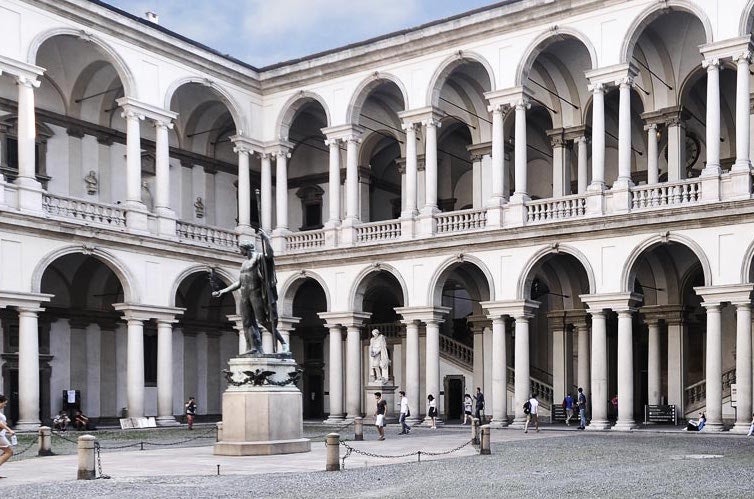
2) The Lamentation of Christ
The striking image of Christ covers almost all of the canvas and, because of the use of trompe l’oeil, draws us into the painting, as if we have become part of the group of mourners gathered around the body. Belonging to the Gonzaga family, this was acquired by the portrait gallery in 1824. It is one of the symbols of the Italian Renaissance.
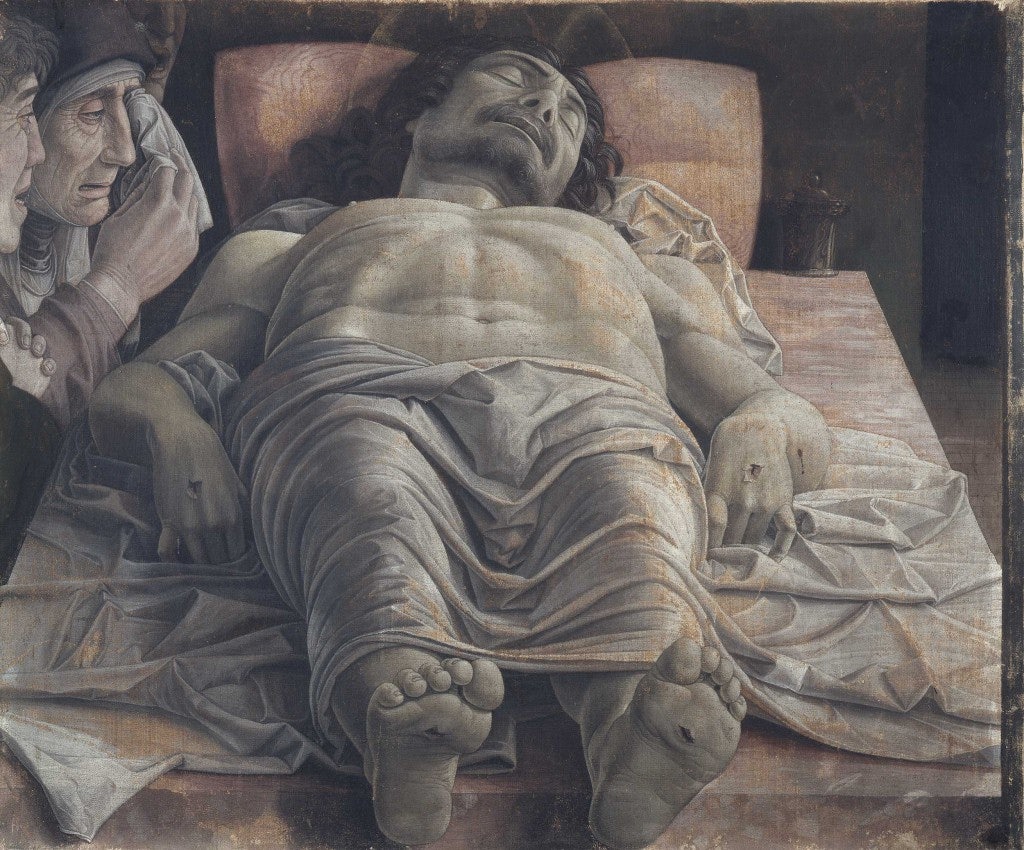
More hidden secrets in Milan?
This guide is packed with hundreds of places to go and secrets to discover. Written by a local, its the perfect companion to explore Milan off the beaten track.
3) The Marriage of the Virgin
An early work by Raphael – he painted it in 1504, following the composition and the iconography of a similar painting by Perugino, with whom he trained. The student became the master over time. The temple, with its converging perspective lines, becomes the centre of the scene, while the figures have been arranged in a semicircle to underscore the geometric and formal perfection of the architecture.
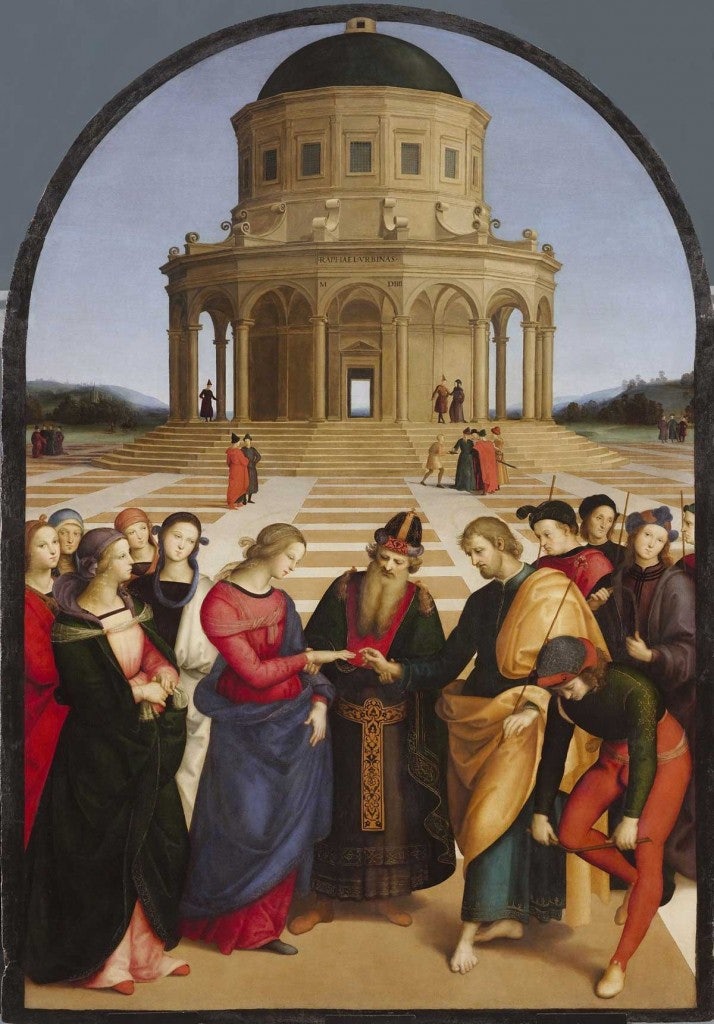
4) Pietà
This Pietà is moving because of the great humanity of its figures and the emotional impact of the Virgin’s pained expression as she gazes at her son. A characteristic of the subsequent works of the artist, who was Mantegna’s brother-in-law and who, like him, liked to place figures in the foreground. It is dated between 1465-70.
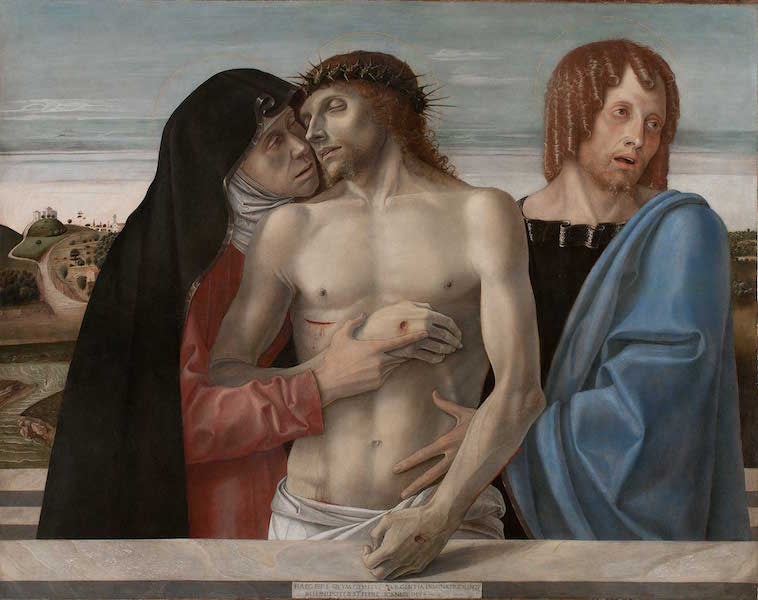
5) Supper at Emmaus
A previous version exists, which is exhibited at the National Gallery in London. The Brera painting (1605-1606) was created after Caravaggio fled Rome where he had been convicted of murder. The use of chiaroscuro, which highlights the most realistic details and Christ’s melancholic face, makes this painting so beautiful.
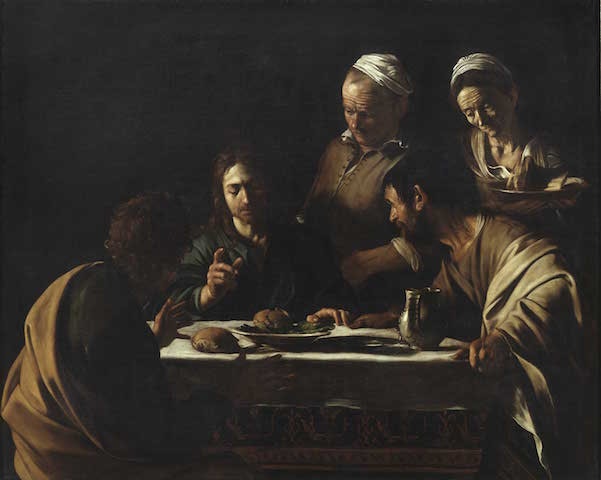
Join the community
Sign up for free to gain unlimited access to the website. Plus, you'll receive a 10% discount in our online bookshop.
Already a member? Log in. |
New here? Sign up. |